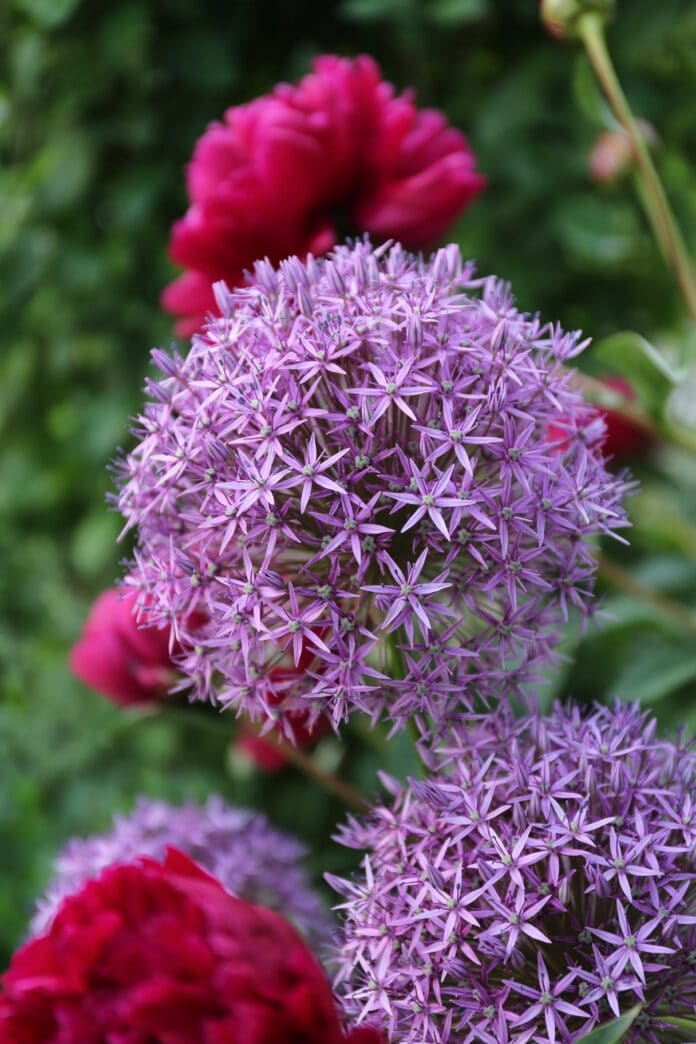
Short or tall, big or small, ornamental alliums are a treat for flower gardeners and for butterflies, bees and other pollinators. Plant the bulbs in fall and enjoy months of colorful spring and summer blooms – this year, and for years to come.
Just like their relatives, onions and chives, ornamental alliums are easy to grow and trouble free. Pest, diseases and even deer don’t bother them. Most types are reliably perennial and winter hardy in zones three to eight. Alliums prefer well-drained soil and full sun, though they will also grow in partial shade.
You can choose flowers that are white, yellow, pink, purple or even blue. All are long lasting and combine nicely with other perennials. They are also excellent cut flowers. When alliums finish blooming, their foliage fades away quickly, so surrounding flowers can take center stage.
Alliums bloom at different times during the growing season, starting with early spring and continuing to midsummer. Consult Longfield Gardens’ allium bloom time chart (longfield-gardens.com) for help choosing which alliums you want to plant in various spaces around your yard and garden, or in containers.
Plant Allium hollandicum ‘Purple Sensation’ for a burst of color just prior to peony bloom. These raspberry-violet globes measure 3 to 4-inches across and are held high on 3-foot stems that rise above most newly emerging perennials. The bulbs are inexpensive, so it’s affordable to create large displays. Plus, they multiply over time, so are a great choice for naturalizing.
Be sure to include some show stopping Globemaster alliums. These flowers are the size of bowling balls, on sturdy, three-foot-tall stems. Bloom time is the same as most peonies, which make excellent companions. The dried seed heads are striking when left in the garden and will usually last into early autumn.
Shorter but just as impressive, allium christophii has eight-inch diameter flowers atop 12- to 18-inch-tall stems. The spiky, violet–pink blossoms have a silvery sheen that adds to the stunning appearance. Plant the bulbs in flower beds, along pathways and in rock gardens where their late spring blooms can be admired close-up. Allow the dried seed heads to remain in the garden for months of added interest.
Plant the drumstick allium, Allium sphaerocephalon, amongst ornamental grasses or allow it to grow up through other perennials. The two-toned, raspberry and green flowers have long, slender stems and are a fabulous addition to early summer arrangements. Drumstick alliums will self-sow, so they’re ideal for naturalizing.
Add an exotic look to the late spring garden with allium bulgaricum, also known as Nectaroscordum siculum or Sicilian honey garlic. The sprays of dangling, cream and burgundy florets have a look that’s completely different from other alliums. Plant them in flower gardens, informal naturalized areas and cutting gardens. They will return to bloom again year after year.
Once you start growing ornamental alliums, you’ll find yourself looking for more varieties and more ways to include these beauties in the landscape. Their long-lasting, pollinator-friendly blossoms and easy-care nature make them a good choice for any gardener.














